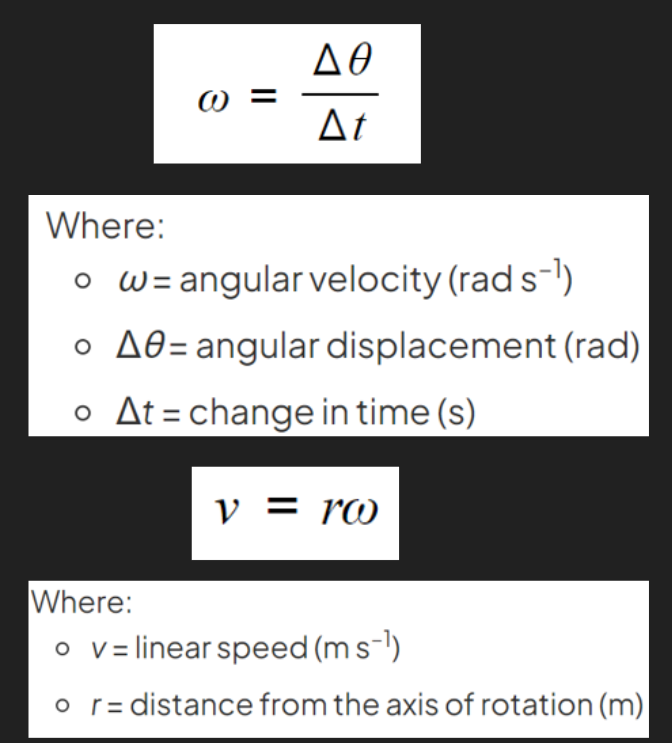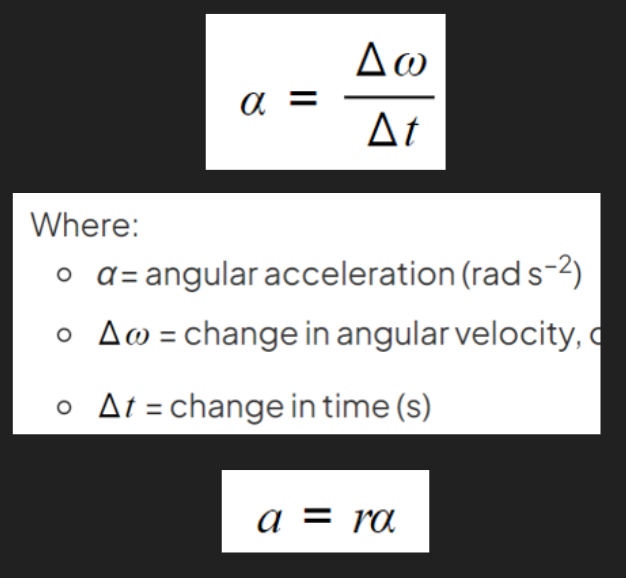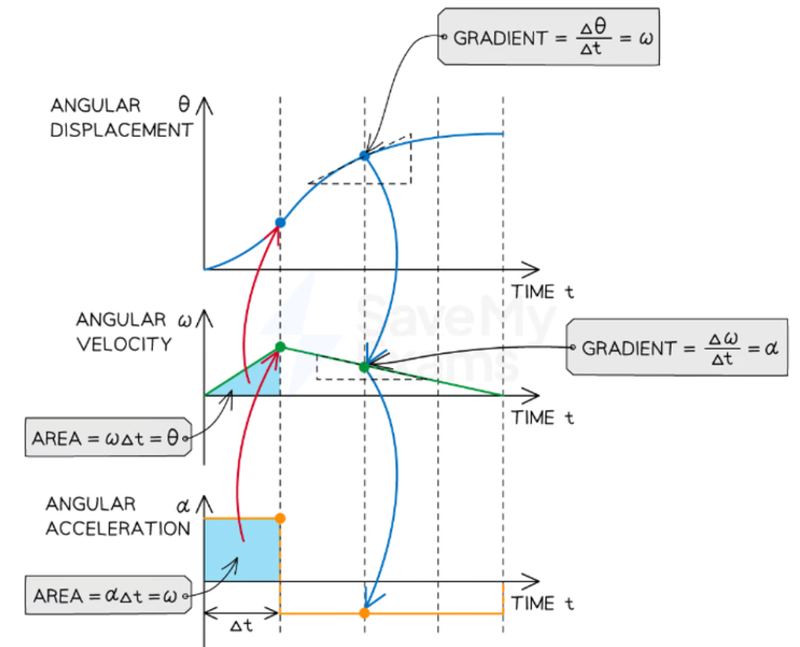Properties of a Rotating Rigid Body
- The rotation of a rigid body can be described in terms of angular displacement, angular velocity and angular acceleration.
- You might recall that these properties are similar to the ones seen in circular motion.
- They describe similar properties, and likewise they use radians.
Angular Displacement
- Angular displacement is the change in angle through which a rigid body has rotated relative to a fixed point.
- The unit for angular displacement is radians.
- Angular displacement is defined as:
s = rθ
- Where θ is the angular displacement, or change of angle in radians.
- S is the length of the arc, or the linear distance travelled along a circular path, in meters.
- And r is the radius of a circular path, or distance from the axis of rotation, in meters.
- Recall that the formula for radians is:
θ = s/r
Angular Velocity
- Angular velocity is the rate of change of angular displacement, and thus is the derivative of it.
- It is calculated the same way as in circular motion:

- Similarly, if only velocity and radius are known, angular velocity can be found by rearranging the equation into:
ω = v/r
Angular Acceleration
- Angular acceleration is the rate of change of angular velocity, and thus is the derivative of angular velocity, and the second derivative of angular displacement.
- It is calculated the same way as in circular motion:

Graphs of Rotational Motion
- As angular velocity and angular acceleration are the first and second derivatives of angular displacement respectively, we can determine several features from their graphs.
- The gradient of an angular displacement-time graph is the angular velocity.
- The gradient of an angular velocity-time graph is the angular acceleration.
- The area under an angular velocity-time graph is the angular displacement.
- The area under an angular acceleration-time graph is the angular velocity.

Equations of Motion
- The equations for rotational motion are actually very close to those of linear motion.
- The key difference is that linear displacement is substituted with angular displacement.
- This means that SUVAT also applies to rotational motion with constant angular acceleration!
- The biggest difference is that θωᵢωfαt doesn't have the same ring to it...
